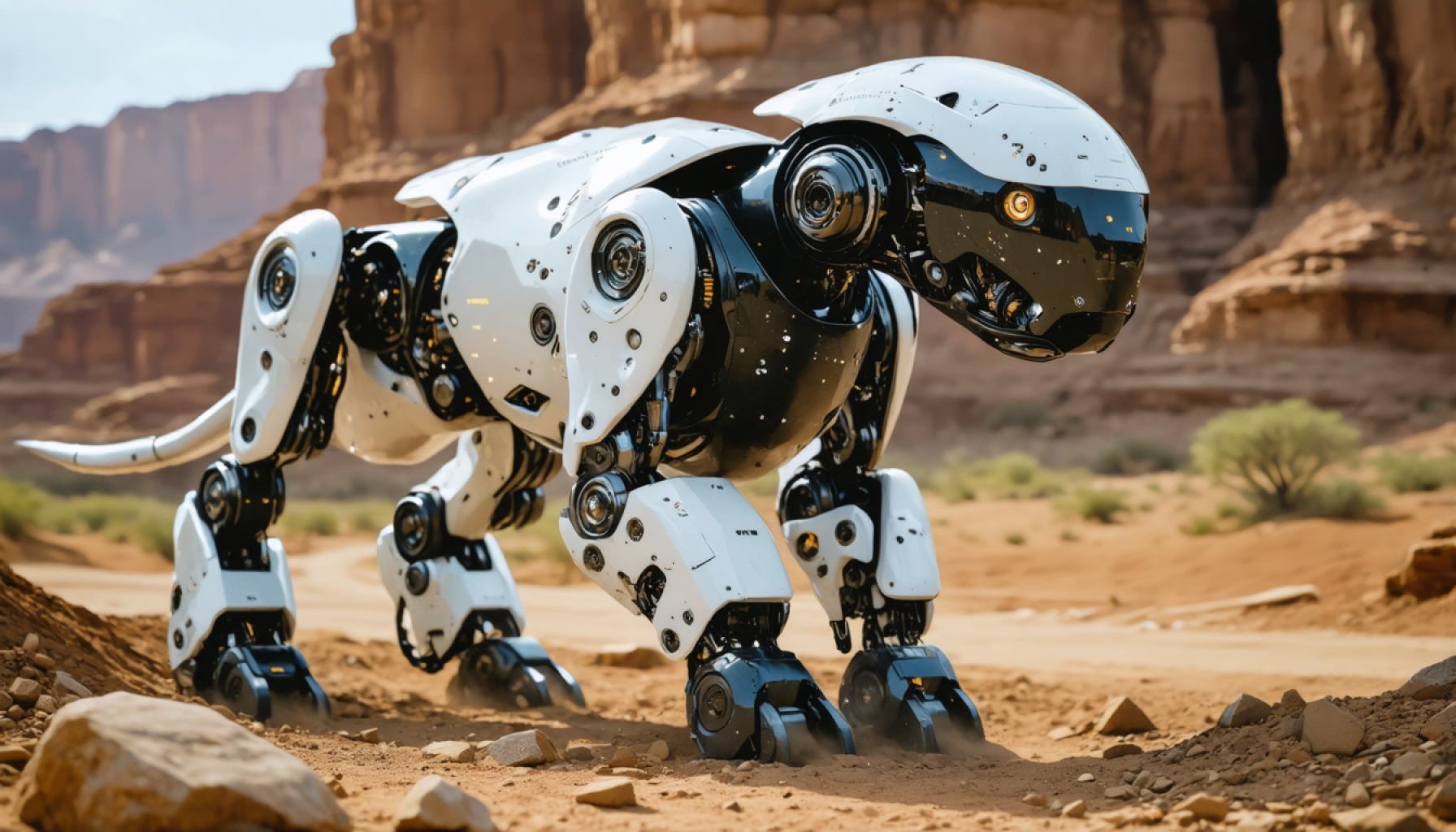- EngineAI has achieved a world-first with its humanoid robot, PM01, performing a frontflip, marking a significant advancement in robotics.
- The PM01, a compact model measuring 1.38 meters, showcases impressive agility, executing a frontflip with precision and balance.
- This achievement contrasts with Boston Dynamics’ 2017 milestone of a robotic backflip, highlighting the intricate engineering required for a forward flip.
- The technological feat demonstrates meticulous design and programming, preventing failure during the dynamic movement.
- EngineAI’s success marks a progression for the entire robotics field, suggesting future potential for more complex robot movements and applications.
- The advancement emphasizes robotics’ goal of transcending human abilities through precision and innovation.
A bold display of agility and engineering brilliance has enthralled tech enthusiasts worldwide. EngineAI, a burgeoning Chinese robotics company, has shattered previous boundaries by achieving a world-first: a humanoid robot executing a frontflip. This leap represents not just physical acrobatics but a significant stride in robotic innovation.
Captured in a captivating video, the compact PM01 model dazzles with its athletic prowess. Standing at just 1.38 meters, the robot gracefully swings its arms forward, building momentum before springing into the air. The audience holds its collective breath as the robot spins and lands with precision, wobbling only slightly in triumphant finish—a mechanical ballet of balance and momentum.
The accomplishment resonates loudly within the tech industry, marking a stark contrast to the previous milestone set by Boston Dynamics with a robotic backflip in 2017. Whereas the American titan and its peers utilized larger automatons to conquer their aerial feats, EngineAI’s choice of a smaller, nimble robot highlights the intricate challenge of a forward flip—demanding acute engineering in dynamic balance and precise timing.
There’s a fascinating tension felt watching this machine defy gravity. Each subtle move is a testament to the meticulous design and programming required to prevent catastrophic failure. This achievement paves the way for even more complex movements and applications for humanoid robots in the future.
In this leap, EngineAI not only propels its creation forward but the robotics industry as a whole, boldly redefining what’s possible in the realm of artificial articulation. The captivating display serves as a poignant reminder: the future of robotics is not just about mimicking human ability but transcending it with finesse.
Revolutionizing Robotics: The Frontflip That Changed Everything
How EngineAI’s Frontflip Innovation Could Change the Robotics Landscape
The recent achievement by EngineAI, a Chinese robotics company, has set new standards in the field of robotics with its humanoid robot, PM01, successfully executing a frontflip. This landmark achievement represents immense progress in robotics engineering, catching the eye of tech enthusiasts and professionals alike. Let’s delve deeper into the impact of this breakthrough and explore areas that the original article did not cover extensively, presenting real-world applications, market forecasts, and actionable tips.
Real-World Use Cases and Applications
The ability of a robot to perform a frontflip signifies a significant increase in the precision, balance, and agility of robotic systems. Such advancements could lead to practical applications such as:
– Search and Rescue Operations: Agile robots like PM01 can navigate through rubble and debris efficiently, making them ideal for rescue missions during natural disasters.
– Entertainment and Sports: Humanoid robots are increasingly being used in entertainment for performances and in sports for training and exhibitions.
– Healthcare Assistance: Robots with advanced physical capabilities could assist in patient rehabilitation, where precise movements are necessary.
Market Forecasts and Industry Trends
The successful demonstration by EngineAI is likely to spur further investment and interest in the robotics market. According to a report by Allied Market Research, the global humanoid robot market size is projected to reach $13 billion by 2026, growing at a CAGR of 52.1% from 2018 to 2026. Innovations like the frontflip will likely accelerate growth across sectors, especially in AI-integrated robotics.
Reviews, Comparisons, and Expert Opinions
While EngineAI has made a significant leap, it’s essential to compare their technology with peers such as Boston Dynamics. Boston Dynamics has long been a leader due to their Atlas robot demonstrating impressive physical feats like backflips. However, EngineAI’s smaller, more nimble model may offer advantages in environments where size and agility are crucial.
Expert Opinion: Dr. Matthew LaClair, a leading robotics researcher, has commented on EngineAI’s achievement, stating, “This frontflip is more than just an impressive stunt; it showcases the level of control and programming sophistication required to ensure stable aerial maneuvers without risking structural damage.”
Controversies and Limitations
While such innovations are groundbreaking, they bring challenges, such as:
– Ethical Concerns: The increasing capabilities of humanoid robots raise questions about privacy, security, and job displacement.
– Technical Hurdles: The precision required for dynamic movements like flips is non-trivial, requiring high-quality sensors and real-time processing abilities, limiting accessibility to high-budget projects.
Security and Sustainability
Security is a growing concern as robots become more prevalent. Ensuring that robots perform safely around humans is essential, requiring robust codes and fail-safes.
In terms of sustainability, the robotics sector is exploring energy-efficient models and recyclable materials to minimize environmental impacts.
Actionable Recommendations and Quick Tips
1. Embrace Continuous Learning: With rapid advancements, staying informed about the latest trends in robotics through courses or seminars can be beneficial.
2. Explore Open Source Platforms: Check out platforms like ROS (Robot Operating System) for up-and-coming developers to experiment and innovate with robotics programming.
3. Watch Industry Leaders: Follow leading companies such as Boston Dynamics and EngineAI to understand market direction and innovation trends.
Final Thoughts
EngineAI’s recent success with the PM01 model is more than a technical feat; it’s an indication of where robotics could go in the next decade. As we integrate more robotics into daily life, understanding these technologies will be crucial.
For more information and updates on robotics, visit Engadget or TechCrunch.











